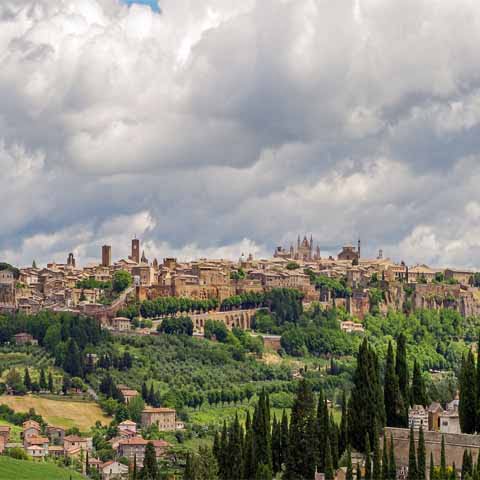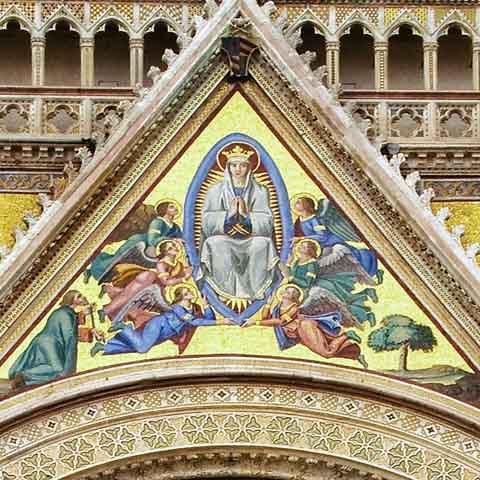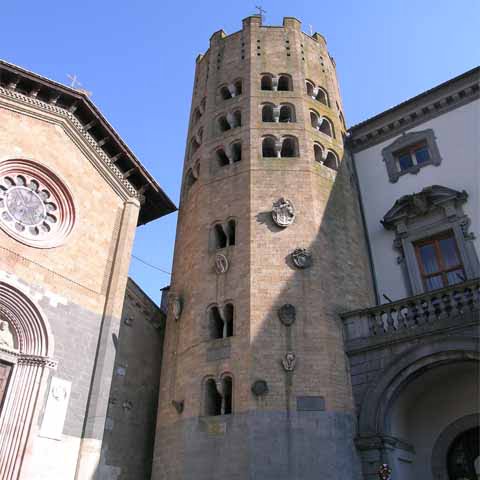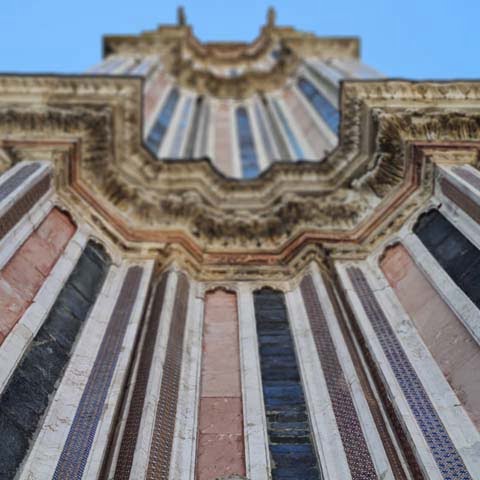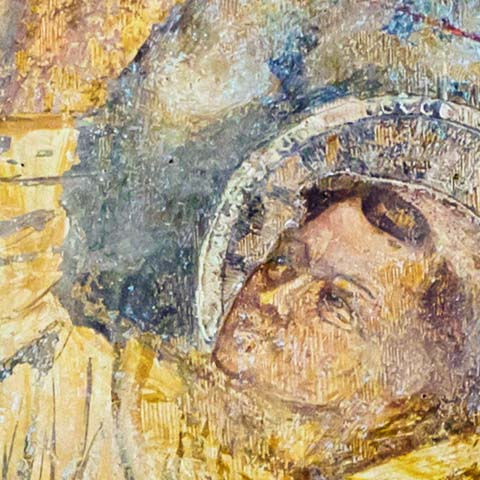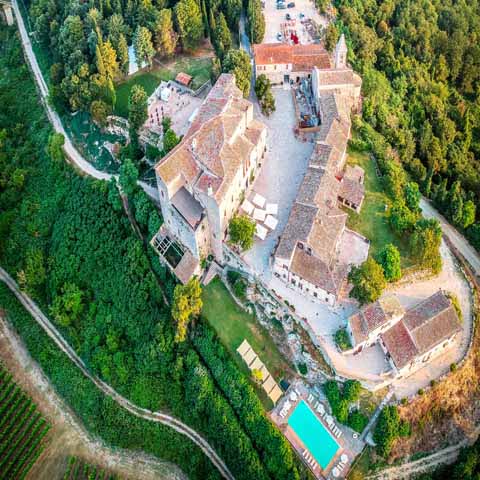The storied history of Orvieto dates all the way back to the ninth century BC when the Etruscans were the dominant civilization on the Italian peninsula. A key city for the Etruscan civilization, Orvieto served as both a major trading hub and a religious center for centuries, largely due to how naturally defensible it was. To this day, it remains one of the most important archaeological sites in Europe, giving insight into pre-Roman lifestyles and history. This is because the volcanic rock and extensive cave systems beneath the town have left much of the remains of the Etruscan civilization that once inhabited Orvieto astonishingly intact. There are many museums around Orvieto that allow visitors a glimpse into this storied and mysterious past, such as the Etruscan Museum, which houses many Etruscan artifacts that were found locally.
Around 260 BC, Orvieto was conquered by the Romans in a military campaign that took over two years to complete, due to the city’s nearly impregnable nature. Once the Romans conquered the city, they exiled the native Etruscans and attempted to destroy much of the remnants of their civilization but ended up missing a great many artifacts in the cave systems below. Orvieto served as both a strategic military site due to its defensible nature, and as a farming town. Orvieto’s soil was found to be perfect for raising grapes and making wine, which would become the town’s primary industry as it remains to this day.
After the collapse of the Roman Empire, Orvieto would trade hands multiple times, much like most other cities on the Italian peninsula. Orvieto fell to the Goths, then the Lombards, before eventually becoming a self-sufficient city state around the 1060s and establishing an era of wealth and prosperity for several centuries. During this period, the town forged ties with the Papacy without actually falling under direct control of the Papacy. Pope Benedict VII was a frequent visitor to Orvieto, while Pope Urban IV actually lived in Orvieto while waiting out the civil war in Rome. However, in the mid-1300s, in the wake of the Black Plague and due to severe political infighting and economic collapse, the town was fully absorbed by the Papacy.
Under the rule of the Papacy, Orvieto became a major cultural and economic center. Many famous scholars lived and worked there, and a university was eventually established. It remained under Papal control until 1860 when it was absorbed into the Kingdom of Italy during the Unification of Italy.
ART
As any town with such a long and storied past would, Orvieto has a rich history of impressive artistic pursuits. One excellent example of both art and architecture is the Orvieto Cathedral, also known as the Duomo, which features Gothic and Romanesque architectural styles. This incredible building is not only renowned for its architecture, but for the impressive bas-reliefs and mosaics built into its front façade, featuring scenes from the Old and New Testaments as well as the life of the Virgin Mary. Also on the façade are bronze sculptures of Mary and the symbols of the four Evangelists. Because of the breathtaking façade, the Duomo is widely regarded as one of the most impressive buildings in all of Italy, belying how little it is spoken of compared to other, more popular tourist locations.
The inside of the Duomo is just as impressive as the outside. Multiple chapels are found within the Duomo, each impressive in their own ways. Perhaps the most famous work of art found within the Duomo is the Chapel of San Brizio (or the Cappella di San Brizio). The chapel’s ceiling is painted with stunning frescoes of the Last Judgment, created by Luca Signorelli, that are said to have inspired Michelangelo’s work in the Sistine Chapel. Five distinct panels each tell a story from Christian lore and are stunning to behold for anybody visiting.
Another excellent work of art found within the Duomo is the Chapel of the Corporal of Bolsena (or the Cappella del Corporale). This chapel is decorated with countless frescoes along the walls and ceilings, as well as numerous statues. Most notably, though, is the painting of Madonna dei Raccomandati, by Lippo Memmi. One can also catch a glimpse of the Corporal of Bolsena, which was at the center of a thirteenth century miracle when a consecrated host bled onto the cloth during mass.
Outside of the Duomo, one can also make a visit to the Chiesa di San Giovenale for even more stunning frescoes and other works of religious art, including a fresco from the fourteenth century depicting the Ascension of Jesus and a Maestà from the fifteenth century.
Other places to visit include the Church of Sant’Agostino to see the incredible selection of marble sculptures, and the Museo Emilio Greco, which houses a collection of bronze sculptures and other works of art by the famous artist Emilio Greco. Greco is also noteworthy for having crafted the doors of the Duomo.
Lovers of history should not miss the chance to visit the Etruscan Museum, which is located opposite the Duomo. Inside, travelers can admire a fascinating collection of local artifacts dating back to the Etruscan Era. Among the items on display are statues, memorial stones, coins, and beautiful vases.
Continuing with Etruscan art and history, not to be missed is the Etruscan Belvedere Temple located near the San Patrizio Well. As the best-preserved Etruscan monument in Orvieto, it is among the prime surviving examples of Etruscan sacred art and architecture. Once decorated with stunning terracotta artwork, today it is possible to step back in time and visit the interior of this remarkable temple.
ARCHITECTURE
As stated previously, the Duomo is just as much of an architectural marvel as it is artistic. The gothic spires and harsh angles of the church are viewed as one of the more impressive examples of early-Renaissance architecture.
Beyond the Duomo, though, visitors should not miss the Palazzo del Capitano del Popolo. This medieval palace predates the Duomo by a century or so and is an astoundingly well-preserved example of pre-Renaissance Italian architecture. It also houses more of the city’s extensive religious artwork, such as the marble sculpture Madonna and Child.
Perhaps the greatest example of architecture found in Orvieto, though, is not a building, but instead a well, of all things. Saint Patrick’s Well (or the Pozzo di San Patrizio) was constructed in the early 1500s, and to this day remains a fascinating example of Renaissance engineering. Visitors are allowed to descend into the well via a pair of spiral staircases that wrap around each other and overlook the massively deep well (173 feet) that once supplied water to the entire town. The Pozzo di San Patrizio is one landmark in Orvieto that no visitor should miss.
Though not as famous, Orvieto is also home to another well, known as Pozzo della Cava. This well is actually of Etruscan origin and was enlarged during the sixteenth century. Today it serves as an underground archeological site with important testimonies of Orvieto’s past. Inside the well, travelers can admire Etruscan burial sites, medieval kilns, and an exhibition of ceramics from the medieval and Renaissance periods.
Furthermore, for those interested in the ancient Etruscan history of the town, one cannot miss taking a visit to the underground caverns to see some of the still-intact bits of the Etruscans’ underground cities. Some landmarks, such as the Etruscan Necropolis, still exist to this day and are open to be viewed by the public.
For the best views in all of Orvieto, head to the thirteenth century Torre del Moro. The panoramas that can be admired after climbing to the top of this 154-foot bell tower are truly remarkable. The mechanical clock was added during restorations in the nineteenth century.
LITTERATURE
Several key Italian literary figures were born in Orvieto over the centuries. Ferdinando Saracinelli was a sixteenth and seventeenth century poet and opera writer. Saracinelli is perhaps best known for writing verses of the comedic opera La liberazione di Ruggiero dall’isola d’Alcina.
Other writers born in Orvieto include Francesco Maria Febei, Luigi Barzini, Bruno Meriggi, and Rosa Matteucci.
CINEMA
A few Italian films have been shot in Orvieto over the years, as well as a number of television shows. Movies and TV shows continue to use the city of Orvieto as a backdrop to this day.
Among the movies filmed in Orvieto are Vivere in pace (1947), Amanti senza amore (1948), and Il grande botto (2000), as well as the television series Don Matteo.
Perhaps more relevant to the adventurous traveler, though, is the newly established Orvieto Cinema Fest. This festival takes place around the beginning of October and hosts both local and international films from a range of genres, such as documentaries and even animations. The festival was only established in 2018, but it is shaping up to become an important annual occurrence.
SCIENCE
Since 2013, Orvieto has played host to an annual scientific conference, aptly named OrvietoScienza (OrvietoScience). The event usually takes place around mid-February and tends to focus around a new theme every year, covering such topics as artificial intelligence and the potential rise of robots, to seismology and volcanology, and much more. Many renowned scientists, researchers, and professors, along with curious visitors and students flock to Orvieto every year to learn more about the world around them and their place in it.
MUSIC
Orvieto also hosts an important music festival. In late December and early January, Orvieto hosts the Umbrian Winter Jazz Festival. This event includes a number of concerts held by popular, and even world-renowned jazz musicians in a number of the historic buildings scattered about Orvieto.
The beautiful hilltop town of Orvieto is revered for its breathtaking cathedral, which is considered to have the most beautiful façade in all of Italy. With countless other striking churches, fascinating museums, and a rich history dating back to the Etruscan Era, Orvieto is an excellent destination to include on a cultural itinerary to Italy.
Don't just see Italy, live it.
Your dream trip to Italy has never been closer
No more endlessly scrolling travel sites. Our travel experts will craft the perfect, one-of-a-kind trip just for you.

300+
DESTINATIONS
We offer more Italian destinations than any travel site. Do and see more with Trips 2 Italy.
1 (of a kind)
ITINERARIES
Because your dream trip to Italy should be designed for you, not for the masses.
100%
PEACE OF MIND
From flights and accommodations, to food and activities - we take care of every detail.
